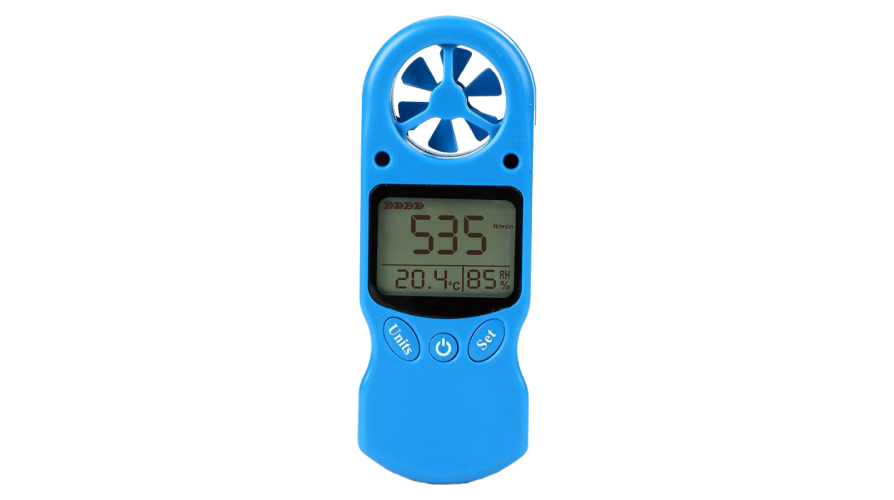Why an Anemometer is Necessary for Your Environmental Information Collection
Why an Anemometer is Necessary for Your Environmental Information Collection
Blog Article
All You Need to Find Out About Anemometers: Just How They Function, Why They Matter, and Where to Use Them
Anemometers, however usually ignored in the world of clinical instruments, play a vital role in numerous areas, supplying beneficial understandings into wind rate and air movement patterns. Comprehending the mechanics behind these devices is crucial for any individual seeking to harness the power of this information. From meteorologists tracking weather patterns to engineers designing frameworks with wind tons in mind, the applications of anemometers are significant and varied. As we look into the details of anemometer technology, we will certainly discover the inner functions of these gadgets, their relevance, and the crucial factors to consider when picking the ideal anemometer for specific applications.

Anemometer Fundamentals
An essential tool made use of to gauge wind rate and direction, the anemometer plays a crucial duty in meteorology and numerous markets. An anemometer normally consists of 3 or 4 cups that revolve in the wind, a vane that points right into the wind, and sensors to track the movements or turnings.
There are different types of anemometers available, including mug anemometers, vane anemometers, hot-wire anemometers, and sonic anemometers, each with its special features and applications. Mug anemometers are generally used for basic wind speed measurements, while vane anemometers are favored for directional dimensions.
Concepts of Anemometer Procedure
Building on the fundamental understanding of anemometer basics, the principles of anemometer procedure elucidate the technicians behind wind speed and direction dimensions. Anemometers operate the concept of air flow influencing a sensor, triggering it to turn. Mug anemometers, for circumstances, have three or even more cups that record the wind, triggering them to spin faster as the wind speed boosts. The turning speed is after that transformed into a wind rate measurement. Vane anemometers, on the other hand, make use of a tail or a probe that aligns itself with the wind instructions, offering a dimension of wind instructions based on the orientation of the sensor. Hot-wire anemometers rely upon a warmed wire that cools as wind passes over it, with the price of cooling determining the wind rate. Ultrasonic anemometers step wind rate and direction by analyzing the moment it takes for ultrasonic signals to travel between transducers. Recognizing these concepts is crucial for accurate and reputable wind measurements in reference different applications.
Relevance of Anemometers
The importance of anemometers in meteorology and various markets can not be overemphasized. Anemometers play a vital function in gauging wind speed and direction, offering important data for weather condition projecting, environment research studies, environmental surveillance, and air travel operations. Meteorologists count on anemometers to gather exact wind data, assisting them recognize weather patterns, forecast tornados, and issue prompt warnings to the general public. In industries such as construction, agriculture, renewable resource, and maritime operations, anemometers are utilized to optimize processes, make certain safety, and enhance performance. Wind farm operators use anemometers to analyze wind problems and take full advantage of electricity manufacturing from wind turbines. In the maritime market, anemometers aid ship navigating by giving real-time wind info to captains, aiding them make informed choices to ensure secure voyages. Overall, anemometers are important devices that add significantly to safety and security, performance, and informed decision-making in meteorology and a variety of industries.
Applications Throughout Different Industries
In the sustainable power industry, anemometers play a crucial duty in evaluating wind conditions for wind farm positionings, making sure ideal power manufacturing. Industries like building and construction and mining use anemometers to keep an eye on wind rates, vital for safety and security methods, particularly when working at heights or in open-pit mines where strong winds can posture risks. In farming, anemometers assist farmers in taking care of crop spraying by supplying real-time information on wind speed to prevent drift.

Selecting the Right Anemometer for Your Requirements
Selecting the suitable anemometer tailored to your details demands is vital for getting precise wind rate and direction measurements. When choosing an anemometer, consider variables such as the designated application, called for dimension range, over here environmental problems, and preferred functions. For basic objectives, a mug anemometer is ideal for measuring wind rate, while a vane anemometer supplies wind direction information. Hot-wire anemometers are suitable for reduced airspeed measurements, and ultrasonic anemometers use high accuracy and sturdiness.

Final Thought
To conclude, anemometers play a critical function in gauging wind rate and instructions throughout different markets. Recognizing the principles of anemometer operation is vital for choosing the appropriate gadget for particular the original source demands. From weather forecasting to aeronautics, anemometers are crucial devices for gathering accurate data and guaranteeing security in various applications. It is necessary to take into consideration the significance of anemometers in order to make informed decisions when choosing the most appropriate tool for measuring wind conditions.
There are various types of anemometers offered, consisting of mug anemometers, vane anemometers, hot-wire anemometers, and sonic anemometers, each with its one-of-a-kind features and applications. Cup anemometers are frequently utilized for fundamental wind speed measurements, while vane anemometers are preferred for directional measurements. Hot-wire anemometers are ideal for low airspeeds, and sonic anemometers are excellent for high-precision measurements in study and industrial settings.Building on the fundamental understanding of anemometer essentials, the principles of anemometer procedure clarify the mechanics behind wind rate and instructions dimensions. For general functions, a mug anemometer is ideal for gauging wind speed, while a vane anemometer supplies wind instructions data.
Report this page